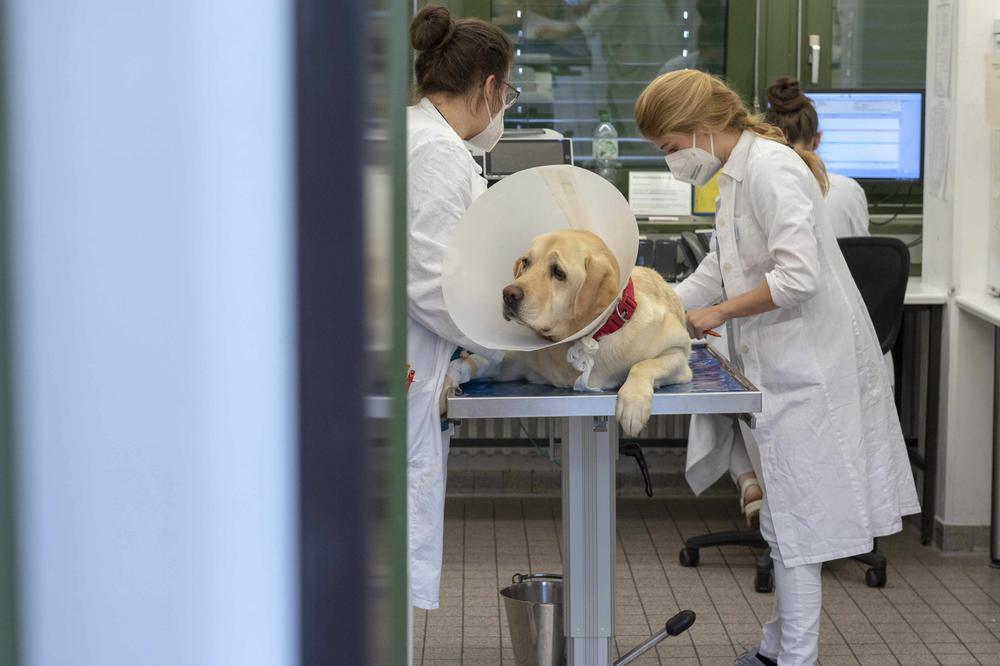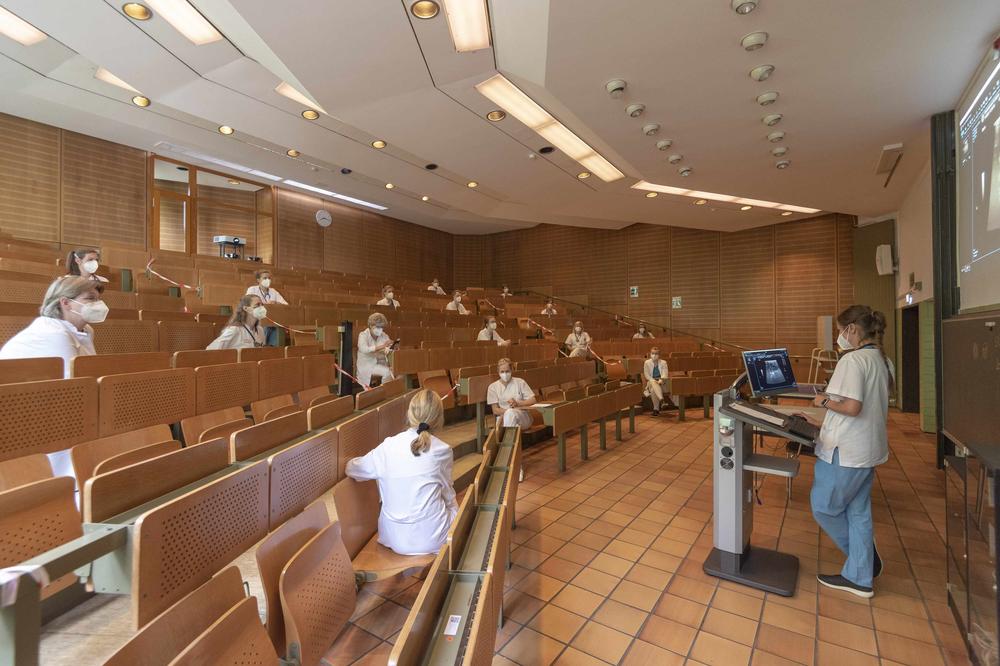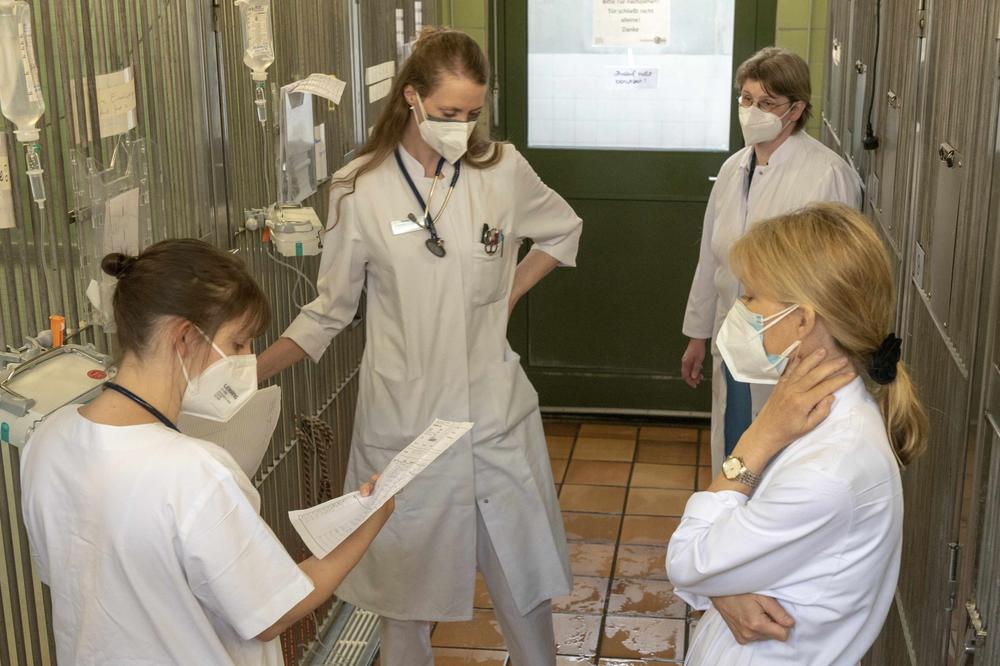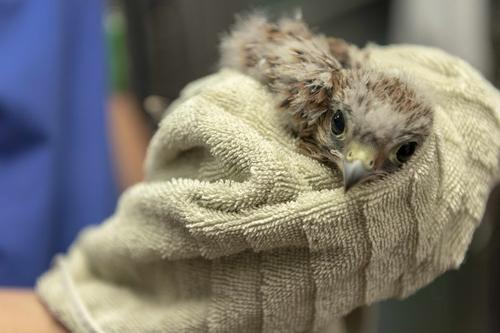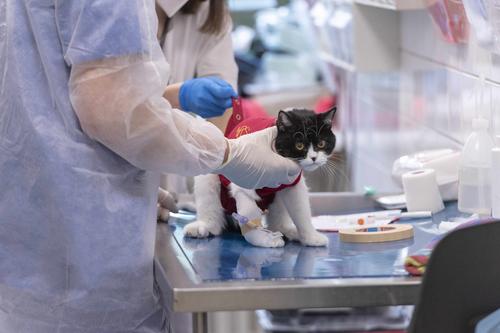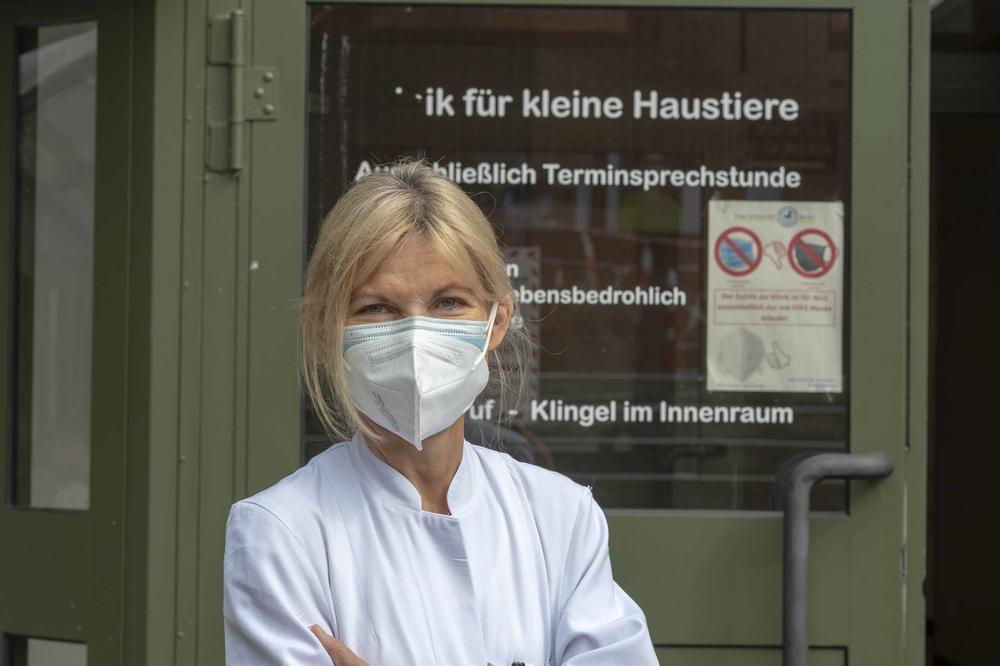Sick Animals Are Welcome Any Time
24 hours a day, seven days a week: In the Small Animal Clinic at Freie Universität, veterinarians, animal caretakers, and students are busy attending to sick pets
Jul 28, 2021
The Small Animal Clinic at Freie Universität serves pets and other animals, large and small.
Image Credit: Bernd Wannenmacher
A puppy that has swallowed a battery or a kestrel chick that has fallen out of the nest: they can get help in the Small Animal Clinic at Freie Universität. So can a dog with epilepsy or a cat with diabetes. The veterinarians work in a three-shift system on the clinic premises in Düppel.
Monday, 8 a.m., in Düppel. Veterinarian Fabienne Walz spent the whole night in the veterinary clinic. Now she is standing in front of a screen in the wooden paneled lecture hall and displaying the ultrasound images of a dog’s belly. Diagnosis: pancreatitis (inflammation of the pancreas). Fabienne Walz informs her colleagues in white coats, sitting in the rows of seats in the lecture hall with sufficient distance and wearing masks, about the incidents during the night shift.
Fabienne Walz’s shift ends after the subsequent rounds. For the other vets and students who are present, the workday is just beginning.
Shift change in the lecture hall: Fabienne Walz (at front right) reports on the incidents during the night shift.
Image Credit: Bernd Wannenmacher
The dog suffering from pancreatitis is not doing well; he also has cancer. The experts discuss how to proceed: the lymph nodes must be punctured, and chemotherapy is being considered. Professor Barbara Kohn asks her colleagues who will inform the owners.
Professor Barbara Kohn, the deputy managing director of the clinic and head of the internal medicine department, sits in the first row in the lecture hall and coordinates the subsequent shift: Who will take on which case? Who is on emergency duty today? The students are also involved, accompanying a vet.
During the rounds, Professor Barbara Kohn (at front right) takes a look at the animal patients and their stats.
Image Credit: Bernd Wannenmacher
Each Ward Has Its Own Treatment Room
After all the questions have been clarified and the cases presented, it’s time for the rounds. The first ward is the intensive care unit for cats. Cats sit and lie in the five cages, which are arranged over two floors. They receive infusions through access points in their paws.
Two animal caretakers change the disposable mats in the cages and speak calmly to the cats. One patient is a nine-year-old Norwegian forest cat whose condition was discussed in the lecture hall. She has diabetes, staggers when she walks, and is weak. Professor Kohn recommends monitoring her blood sugar continuously for 14 days.
The kestrel chick that fell from the nest was dropped off at the clinic a few days ago.
Image Credit: Bernd Wannenmacher
Each ward has its own treatment room.
Image Credit: Bernd Wannenmacher
Veterinarian with Heart and Soul
Born in South Germany, Professor Kohn has been teaching and conducting research at Freie Universität since 1996. She says she is a veterinarian with heart and soul. In the veterinary clinic, however, one struggles with problems similar to those in human medicine, such as the shortage of nurses and doctors. "In principle, we are a copy of a human medical clinic," she says.
Organizing the 24-hour service is also similar. Staff is needed in the areas of surgery, internal medicine, and anesthesia. Operating room nurses, veterinary specialists and animal caretakers ensure that the sick animals can be cared for even on Sundays and public holidays.
“There is also a lack of donor blood in veterinary medicine”
A few doors down is the clinic’s own blood bank. Here, in an emergency, donated dog blood is processed in a large centrifuge and separated into blood plasma and solid blood components, so-called erythrocytes. Here, too, there are parallels to human medicine, which has been fighting against the population’s declining willingness to donate for years. Barbara Kohn explains, “There is also a lack of donor blood in veterinary medicine. This is mainly due to the fact that almost every third potential animal donor in dogs is an imported animal with an unclear history and thus cannot be used.”
As with humans, blood transfusions can also be life saving for animals. “Many owners do not know that we depend on them providing us with their dogs and cats – if they are suitable – for donating blood,” says Professor Kohn.
The next four-legged patients are already waiting for Barbara Kohn at the veterinary clinic’s scheduled appointments: a dog with high blood pressure, another with pneumonia. Then there is the imported dog who suffers from a “Mediterranean disease,” a heartworm infestation. The doctors will be on duty until 4.30 p.m., when the next shift change is due.
This article originally appeared in German on July 21, 2021, in campus.leben, the online magazine of Freie Universität Berlin.

